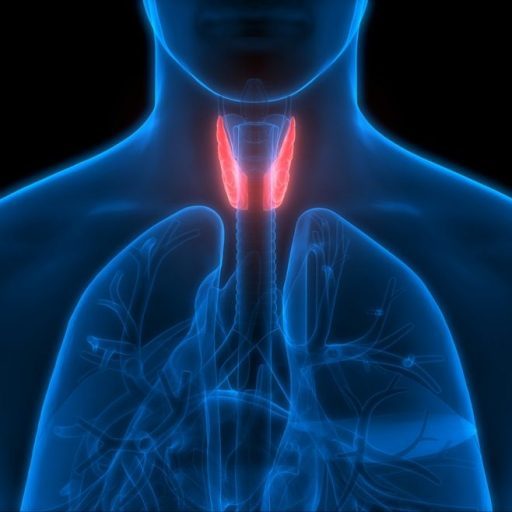Table of Contents
ToggleThe intricate relationship between thyroid health and pregnancy has long captivated the medical community. As a critical endocrine gland, the thyroid plays a fundamental role in maternal and fetal well-being. The American Thyroid Association (ATA) guidelines play a crucial role in navigating this complex area, offering evidence-based recommendations to clinicians. Reflecting the latest clinical research and expert consensus, these guidelines have evolved significantly over time. This article aims to elucidate the key aspects of these guidelines, with a special focus on the anticipated updates for 2024, which are expected to bring forth new insights and recommendations in this ever-evolving field.
“The thyroid gland is a small organ with a huge impact on our health. It’s essential to keep it balanced, especially during life’s critical stages like pregnancy.”
Current Recommendations for Hypothyroidism Management
Hypothyroidism during pregnancy, a condition marked by insufficient thyroid hormone production, can have profound implications for both the mother and the developing fetus. If inadequately managed, it can lead to complications such as preterm birth and impaired fetal neurodevelopment. The current ATA guidelines provide a clear directive on managing this condition: the importance of adjusting levothyroxine doses and rigorously monitoring Thyroid-Stimulating Hormone (TSH) levels is emphasized, with a target TSH level below 2.5mIU/L before and during pregnancy. This proactive approach, illustrated through various clinical scenarios, underscores the delicate balance clinicians must strike to optimize pregnancy outcomes and fetal development.
Three practical tips or facts about thyroid and pregnancy:
- Thyroid Testing Timing: It’s vital for women with a history of thyroid disorders to get their thyroid levels checked before attempting to conceive. Optimal thyroid function is crucial for fertility and maintaining a healthy pregnancy. Early testing can identify any need for adjustments in medication or treatment plans, setting the stage for a healthier pregnancy journey.
- Monitoring Postpartum Thyroiditis: Postpartum thyroiditis, an inflammation of the thyroid that occurs after childbirth, affects a significant number of women. Symptoms can include fatigue, mood swings, and weight changes. Regular thyroid function monitoring for at least 6 months postpartum is recommended, especially for those with a history of thyroid issues, to ensure timely diagnosis and treatment.
- Impact on Fetal Development: Adequate maternal thyroid hormone levels are crucial for fetal brain development, particularly during the first trimester when the fetus depends entirely on the mother’s thyroid hormone. Even mild thyroid dysfunction in the mother can impact the child’s cognitive development, making regular thyroid function monitoring a key aspect of prenatal care.
Key Components of the ATA Guidelines
The ATA’s guidelines offer a holistic framework, encompassing various aspects of thyroid management in pregnancy. They stress the importance of precise thyroid function testing, ensuring adequate iodine intake – a key element for thyroid hormone synthesis, and detailed treatment protocols for various thyroid diseases during pregnancy and lactation. For instance, the guidelines offer specific recommendations for managing hyperthyroidism, outlining the risks and benefits of different treatment modalities. This thorough examination of the guidelines’ components underlines their critical role in guiding clinical decisions, ensuring both maternal safety and fetal health.
Anticipated Updates in 2024 Guidelines
The dynamic field of thyroidology continues to evolve, and with it, the ATA guidelines. The 2024 update is expected to address several pressing issues. Among them is the ongoing debate over universal thyroid disease screening during pregnancy. This screening is crucial for early detection and intervention, potentially reducing adverse outcomes. Another significant topic is the treatment approach for euthyroid TPO Antibody positive women, a contentious area due to its implications for pregnancy outcomes. The session also hinted at new research findings that might impact the guidelines, such as the efficacy of levothyroxine in specific patient groups. These updates will offer valuable insights into the future of thyroid management in pregnancy, reflecting the latest in clinical research and expert opinion.
The Evolution of Thyroidology in Pregnancy
Tracing the evolution of thyroidology guidelines reveals a story of continuous learning and adaptation. From rudimentary understandings to today’s sophisticated recommendations, these guidelines have been shaped by decades of research and clinical experience. They have transitioned from general suggestions to detailed, evidence-based protocols. This section presents case studies from different eras, illustrating how changes in guidelines have directly impacted clinical practice. It also reviews major research breakthroughs that have informed these evolutions, demonstrating the field’s ongoing commitment to evidence-based care and patient safety.
Clinical Significance of the Guidelines
For healthcare providers, the ATA guidelines are indispensable, serving as a comprehensive guide for optimal patient care. This section delves into the guidelines’ direct implications for endocrinologists, obstetricians, and general practitioners. It explores how these guidelines inform clinical decisions, from routine prenatal care to managing complex thyroid disorders. Real-world cases are presented to illuminate how adherence to these guidelines enhances patient outcomes, offering a patient-centric view of thyroid management in pregnancy.
Conclusion
The 2024 ATA Thyroid and Pregnancy Guidelines are set to be more than just an update; they represent a living document, evolving in tandem with advances in thyroid research and clinical practice. As the medical community eagerly anticipates these updates, the excitement underscores a deep commitment to improving maternal and fetal health in the face of thyroid disorders. These guidelines will continue to shape clinical practices, ensuring that pregnant women with thyroid disorders receive the most effective and safe care.
Frequently Asked Questions (FAQs)
1. What is the impact of thyroid disorders on fertility?
Answer: Thyroid disorders, both hypothyroidism and hyperthyroidism, can affect fertility by disrupting menstrual cycles and ovulation. Proper management of thyroid conditions is essential to improve fertility outcomes and ensure a healthy pregnancy.
2. How does hyperthyroidism affect pregnancy?
Answer: Hyperthyroidism during pregnancy can lead to complications such as preterm birth, low birth weight, and preeclampsia. Treatment typically involves antithyroid medications, with careful monitoring to balance maternal and fetal health.
3. Can thyroid disorders affect the baby’s development?
Answer: Yes, uncontrolled thyroid disorders during pregnancy can impact the baby’s growth and brain development. Adequate treatment and monitoring of the mother’s thyroid levels are crucial for the baby’s overall health.
4. Are there specific dietary recommendations for pregnant women with thyroid disorders?
Answer: Pregnant women with thyroid disorders should ensure adequate iodine intake, as it is vital for thyroid hormone production. However, excessive iodine can be harmful, so it’s important to follow guidelines and consult healthcare providers for personalized advice.
5. How often should thyroid function be tested during pregnancy?
Answer: The frequency of thyroid function tests depends on the individual’s condition and treatment. Typically, TSH and free T4 levels are monitored every 4-6 weeks throughout pregnancy to ensure optimal thyroid hormone levels.
6. What are the postpartum considerations for women with thyroid disorders?
Answer: Postpartum, women with pre-existing thyroid disorders or those who developed thyroid issues during pregnancy should continue to have their thyroid function monitored. Postpartum thyroiditis, an inflammation of the thyroid gland after childbirth, is also a condition to be aware of.
References
These references provide comprehensive and authoritative information on thyroid management during pregnancy, including the latest guidelines and research in the field.






